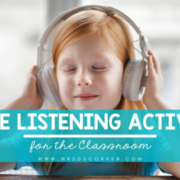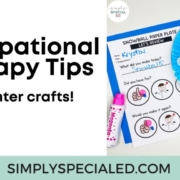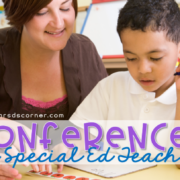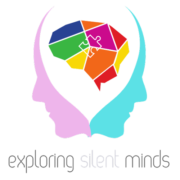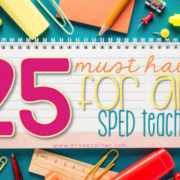Fun Active Listening Activities for the Classroom
Are you doing enough active listening activities with your students? Active listening is a crucial skill that helps students engage more fully in their learning experiences. It involves not just hearing words but understanding, interpreting, and responding to them.

Active listening fosters better communication, enhances comprehension, and promotes a supportive classroom environment – all things that are very important for special ed students! Here, we explore ten fun activities that encourage active listening among students, making learning interactive and enjoyable for both students and their teacher (that’s you!)!
Why Active Listening Matters
Active listening is essential for several reasons.
It Improves Communication Skills
Students who practice active listening develop better communication abilities, which are vital for academic success and social interactions.
Enhances Comprehension
When students listen actively, they are more likely to understand and remember information, leading to improved academic performance.
Builds Empathy
By paying attention to others, students learn to appreciate different perspectives and develop empathy toward their peers.
Promotes Classroom Engagement
Activities that require active listening keep students engaged and focused, creating a more dynamic and interactive learning environment.
Must-Try Active Listening Activities
Now, let’s explore some fun and engaging activities that can help students practice active listening skills.
Simon Says
In this classic game, the teacher gives instructions starting with “Simon says,” and students must follow those directions only when prefaced by that phrase. This game not only encourages students to listen attentively but also helps them practice following directions accurately. It can be made more challenging by increasing the complexity of commands or introducing physical activities. Simon Says was always one of my students’ favorites!
Story Circle
In a story circle, students sit in a circle, and the teacher starts a story with one sentence. Each student takes turns adding a sentence to build the story. This activity requires students to listen carefully to what their peers say to ensure continuity and coherence in the narrative. It fosters creativity while reinforcing the importance of paying attention to details. Some students struggle with this so make sure you let them know that even a short sentence is fine.
Whisper Chain
Also known as “Telephone,” this game involves whispering a message from one student to another until it reaches the last person in line. The goal is to see how accurately the message is conveyed by the end. This activity highlights the importance of clear communication and attentive listening, as messages can easily become distorted if not carefully passed along. Incorporate this game into a lesson about how details of events in history are often skewed after much retelling.
Sound Scavenger Hunt
In this sensory activity, students close their eyes and listen for specific sounds in the classroom or outdoors. After a few minutes of focused listening, they report what they heard. This activity sharpens auditory discrimination skills and encourages mindfulness as students tune into their environment. This is a great calm down activity!
Follow the Rhythm
The teacher claps a simple rhythm, and students must listen carefully to repeat it accurately. This activity can be varied by introducing different rhythms or adding movements to accompany the clapping. It helps students develop concentration and improves their memory and coordination. I liked to do this one during circle time each morning.
Guess the Sound
In this fun activity, teachers can play recordings of various sounds such as animals, vehicles, or household items. Students then identify these sounds based on their listening skills. This activity not only sharpens auditory recognition but also engages students in critical thinking as they deduce what they hear.
Drawing from Description
In this creative exercise, the teacher describes a simple picture while students draw what they hear without seeing the original image. Afterward, students can share their drawings with the class. This activity emphasizes careful listening and interpretation and allows for artistic expression.
Musical Statues
Students dance while music plays but must freeze when it stops. They must listen carefully for the change in music to react promptly. This fun game keeps students active while honing their listening skills and self-control.
Listen and Act
In this activity, the teacher gives a series of simple instructions for students to follow in order (e.g., “Stand up, touch your nose, and sit down”). This task encourages attentive listening, as students must remember and execute multiple directions correctly.
Story Comprehension
Reading a short story aloud and then asking students questions about the details reinforces their listening skills. This activity ensures that students are engaged with the material and helps teachers assess comprehension levels. Be sure to use this one strategically as you want to have read aloud times be fun and simply for enjoyment as well.
Incorporating active listening activities into the classroom not only makes learning enjoyable but also equips students with essential skills that will benefit them throughout their lives. By engaging in these fun exercises, students learn to listen attentively, communicate effectively, and appreciate diverse perspectives—all vital components of successful learning and collaboration.
YOU MAY ALSO LIKE…
- Indoor Recess Ideas for the Special Ed Classroom
- Movement Break Ideas for the Special Ed Classroom
- Setting Up a Calm Down Corner or Kit in Any Classroom
The post Fun Active Listening Activities for the Classroom appeared first on Mrs. D’s Corner.

